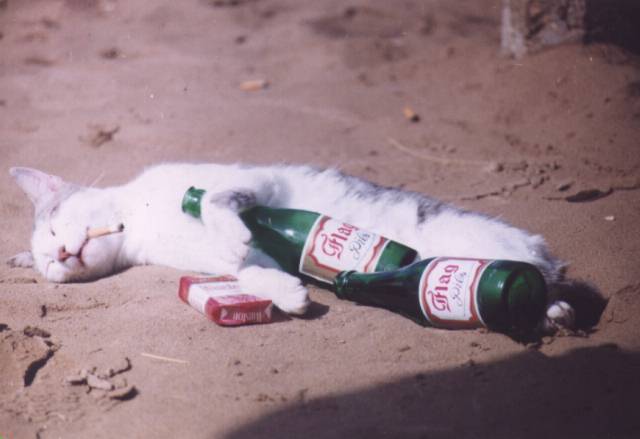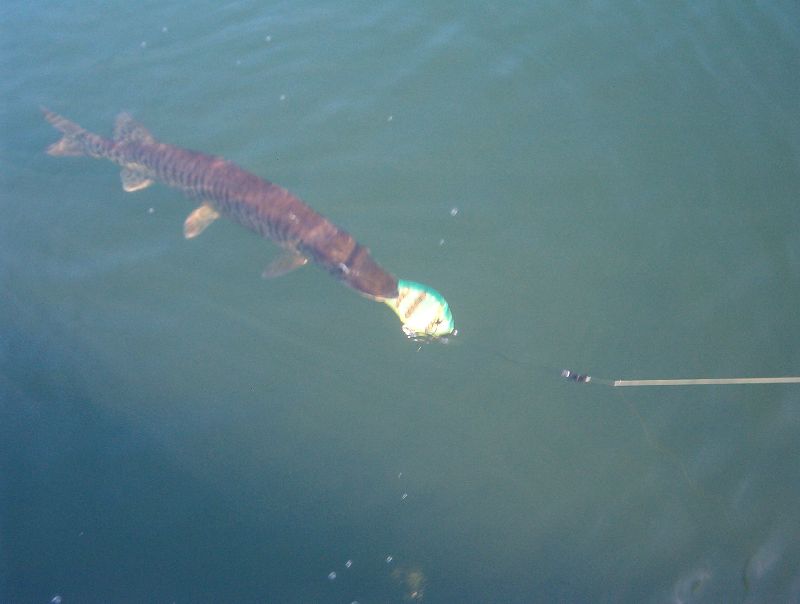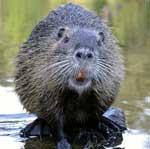|
|

Posts: 346
| I was at a smaller lake a week ago and the dnr was getting ready to shock the lake (about 9pm). He said the biggest fish that he has shocked from this lake is a 44". They shock the lake 2-3 times a year. He went on to say that someone must be keeping muskies in this lake since the 40" limit has been in use since the 80's. I have heard of a 55" fish that has been caught in this lake from a reliable source. I have seen a couple high 40's very clearly. Seen some much bigger fish roll/jump. What does this dnr report tell you? You would think that they should have shocked much bigger fish. How much of the population do they actually shock?
Thanks,
MJB |
|
| |
|

Posts: 419
Location: Appleton, WI | I had talked to a guy that works for the DNR that does alot of fyke netting and boom shocking. He said that it's typically tougher to shock larger fish because they are aware that the electrical field is approaching them. They have a much larger lateral line than the smaller fish so they are able to sense the approach of the boom. He said that sometimes the fish will literally jump clear out of the water in the path of the boom to avoid the electrical current. The large fish also tend to recover quicker than the smaller fish also. Therefore fleeing before the biologist has a chance to capture it.
catch ya later,
Krappie
P.S. Maybe Jason Long can jump in with the gory details. I imagine he could explain it much better than I have. Better yet, if Jordan Weeks is out there can you please post a response to this thread.
Edited by Krappie 5/20/2003 5:21 PM
|
|
| |
|

Posts: 1462
Location: Davenport, IA | I know next to nothing on this, but reports from lakes I've read it always seems that very few muskies are shocked. Maybe thats the way it works for all fish though. Netting always gets more fish (it seems) |
|
| |
|

Posts: 32934
Location: Rhinelander, Wisconsin | I will ask my son, Keith. He is on the boom shocking and fyke netting crew during the spring for the DNR out of Woodruff. |
|
| |
|

Posts: 299
Location: Nowheresville, MN | Krappie's got her on the head. The bigger mass of large fish "absorbs" more current, therefore they can feel the electric field coming and avoid it before entirely stunned. Not to mention it's also hard to fit a long fish like that in a dip net. Fyke nets are most efficient at capturing the larger fish.
Many factors come into play as to how many fish are shocked in a night: weather, water quality (specific conductance), netter skill, target fish, season, ect.
-Mike
UWSP
|
|
| |
|

Posts: 1996
Location: Pelican Lake/Three Lakes Chain | My brother-in-law also works on a fish survey crew. They seldom get muskies of legal size when shocking and he gives the same reasons the others have. Netting is a different story however. He called me two weeks ago from a netting outing to tell me they had 27 legal size fish in the net, one was a 48.5" pig. He gave me the name of the lake, probably one of the first times getting married paid off.  |
|
| |
|

Posts: 32934
Location: Rhinelander, Wisconsin | Keith tells me that all muskies, and especially those over 40" recover verey quickly, and need to be nearly in the middle of the booms to shock well. He sees plenty of big fish, but they are difficult to get in the small nets used for the surveys, and frequently seem to feel the current and avoid the shock enough to move past the boat in view, but not shocked enough to boat. The biggest he has seen boomshocked and boated for measurement was about 51", but he has seen many in the upper 40" to low 50" class as they move by the boat. The idea of boom shocking is to generally establish population estimates and to find young of the year to study natural reproduction success of all the gamefish populations, and to see how many 'recaps' of Fyke netted fin clipped fish they bring up and how many are not clipped. Fyke netting is more effective to establish year class presence, male/female ratio, aging samples, and the overall health of the fish species studied in that system. |
|
| |
 Shocking???
Shocking??? Shocking???
Shocking???